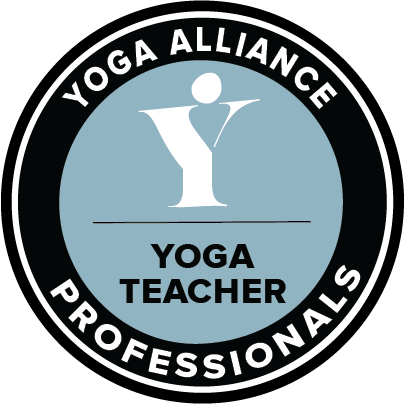Got questions about our services? Browse our Frequently Asked Questions below, if your question is still unanswered then please feel free to email us at emma@yogabab.com.
Respect your own limits, nothing should hurt so don’t push through any pain. If anything causes you discomfort then ease off and rest or try one of the alternative postures that the teacher has demonstrated. It’s ok to stop during the practice and rest in a pose such as childs pose until you feel ready to join in again, be guided by your body and don’t worry about what everyone else is doing. At Yoga Bab we encourage a non-competitive and non-judgemental practice so you can feel comfortable. Good idea to speak to your doctor beforehand and explain that you’re thinking of trying yoga, they can have a chat with you about the suitability for your health conditions. Make sure to arrive early before your first class and let the teacher know about any injuries or restrictions, the teacher will happily have a quiet conversation to one side with you rather than discussing your health condition in front of the whole class.
Our classes aren’t overly spiritual and we don’t generally use chanting so there’s no need to worry if these things aren’t your bag. You may find some information about the chakras woven into classes sometimes as lots of students find this interesting and it can help to have a focal point for the area of the body that we are focusing on. There is of course a connection between yoga and spirituality, with the practice of yoga being a way to connect mind, body and spirit, so whilst we don’t focus on the spiritual side, we don’t deny it either, nor discourage anyone from exploring the spiritual benefits.
Yoga Bab classes are hatha style yoga, which is more gentle so is accessible for beginners too. Hatha is a Sanskrit word made up of two syllables, ‘ha’ meaning ‘sun’ and ‘tha’ meaning moon. This captures the balance of the cool energy of the moon and the hot energy of the sun, symbolising life force and consciousness. The idea is that these oppositions come into one, a seamless harmony of being.
Our typical class structure is to begin with a gentle warm up, followed by movement through a sequence of poses followed by some pranayama and a guided meditation to finish. The poses are generally held for five complete breaths so you have the opportunity to settle into the correct alignment and allow the mind, body and breath to connect.
Lots of styles of yoga use the same basic postures, what generally varies is the speed of transition, how long they’re held for and the repetition of poses. In fact, the best known styles of yoga that we practise in the West such as Vinyasa, Iyengar, Ashtanga for example are a form of hatha yoga. So it’s really about finding the right style for you and the right teacher for you. Approach it with an open mind and think about what you want to get out of yoga, why are you coming to class? For example, lots of students want to practise yoga as a way of unwinding and helping to cope with the stresses in life as well as improving their strength, flexibility and balance, yet some of these students can find hatha yoga mentally challenging to start with because of it’s slower, more gentle nature, they get so used to rushing around and their minds racing that it can be a challenge to slow down. Stick with it for a bit though bab, surrender to the practice and allow your body to just be, this is exactly why you came! I can relate to this as someone whose mind can be racing too and this is one of the reasons why I practise and love hatha yoga. You’ll soon see the benefits too.
If you’re finding the class too hard then as your teacher I’ll have spotted you struggling and will offer some simpler alternative for postures without drawing attention to you. Sometimes our bodies are limited by flexibility or by our natural range of movement in our skeletons. Everyone’s body is different and you might find that some areas of the class are more challenging to you, for example balances, compared to postures involving more strength. There’s a fine line between challenging ourselves in a good way to improve our strength and flexibility and pushing ourselves and bodies too hard. If at any point during the class you find that a pose is painful or you’re struggling to breath or just doesn’t feel right for some reason then ease off and come out of the pose. You always have the option to sit part of the class out and take a restorative pose like ‘child’s pose’ which I will show you at the start of the class. Ideally, you can then rejoin the class when we move onto a different pose which is more accessible to you. It’s important to be kind to yourself and listen to your body and stay within safe limits for you. In the non-competitive environment in Yoga Bab classes you can just forget about what everyone else is doing and focus on your own practice. It’s important not to compare yourself to others in the class or try to copy what another student is doing if your body isn’t up to it, we’re all on our own yoga journey.
Each yoga class lasts for 60 minutes unless specified otherwise for example for one off events or mandala workshops. The 60 minute yoga class is made up of a short warm up at the start and breathing practice followed by a yoga flow and we end with about a 5 minute relaxation and meditation.
There are no specific changing rooms however there are toilet cubicles available for use at each venue.
There are a limited number of mats available to borrow for the duration of the class. You’re welcome to use one of these or bring your own. You can even use one to double up with your own mat to provide extra cushioning and support.
Yes you can, and there’s even a discount available for doing so! If you book a block of 6 classes you can save 6% from the total price (6 classes = £45 instead of £48)
The yoga mat you use is really down to personal choice. There are a variety of mats on the market to suit different budgets and preferences, for example if you want a mat made from recycled materials, if you need more cushioning or if you want a fun design. You can also buy mats with alignment markings on them which can be useful to help with correct alignment but these aren’t essential as I’ll give you alignment cues in the class. If you need more support under your knees for example, you might like to try a thicker mat or you can purchase separate knee pads/supports to use when in kneeling postures. Remember that whatever mat you choose, you need to be able to conveniently transport it to and from class so one that you can roll up or fold up is ideal.
At the moment Yoga Bab is only running regular group classes but please feel free to speak to your teacher about 121 classes as we may be able to arrange something depending on your specific goals or can point you in the direction of another teacher.
There are free car parks in Kings Heath Park with entrances on Vicarage Road and Avenue road. If you use any alternative car parks or nearby roads please check the relevant conditions.
Parking is available at all locations. The venue information provided when booking will provide details of parking availability.
- The Karma Centre in Kings Heath has a free car park at the rear and you can also find street parking in the surrounding roads. The number 35, 50 and 150 buses all stop outside the Karma Centre.
You should aim to arrive about 10 minutes before the class start time to allow enough time to get settled before we start. You’ll feel much more relaxed and in the right headspace to practise yoga than if you’re rushing around. It also gives you a chance to discuss any health conditions or injuries with the teacher before the class. Latecomers might not be admitted once the class has begun as it is disruptive to the other students. Arriving on time is important so you don’t miss the start of the class, the all important warm up that lowers risk of injury. If you have a few moments before class begins it’s a great idea to ground yourself by having a lie down or sitting comfortably on your mat whilst you wait for the class to begin.
Wearing comfortable clothing that you can easily move in will allow you to get the most out of the postures and class. Layers are always a good idea so you can have the option to remove layers as we warm up whilst moving around and put some back on when we do the relaxation at the end as the body temperature can drop a little. Some people also like to bring a light blanket and/or eye pillow to the class to use during the relaxation at the end. Bring a bottle of water to stay hydrated as you wish throughout the class. Unless the class booking information specifically states that a mat can be provided then you should bring your own as not all venues have mats available. You’re welcome to bring ‘props’ with you such as yoga blocks and a yoga strap. They’re not compulsory but can help you to get into the more challenging poses safely and I’ll provide instruction to help you make the best use of these tools. If you find sitting on the floor uncomfortable then you’re also very welcome to bring a cushion for support. I don’t use bolsters in the classes as not everyone has one so there’s no need to bring one to class with you.
Classes are generally pitched at an intermediate level, with plenty of alternative posture options given throughout for you to take easier or more challenging variations depending on your own goals, ability and just how you’re feeling that day. It’s really important to listen to your body and be kind to yourself so that you aren’t overstretching or pushing yourself beyond your safe limits. If you’re a complete beginner please let us know so we can provide more detailed instructions for the poses, the classes are open to all.


